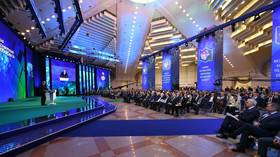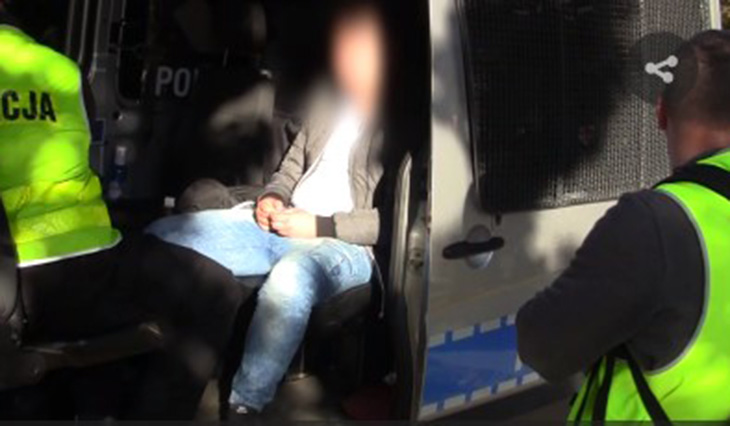
Air travel mysteries abound, from why airplane food tastes bland to why windows have tiny holes. However, one question has particularly captivated passengers’ attention during their final descent: why do flight attendants or Cabin crew sport fancy cross-body seatbelts while passengers make do with simple lap belts?
This curious disparity has sparked countless discussions across social media platforms, with travellers wondering whether cabin crew members receive premium safety treatment or if there’s a practical reason behind these different restraint systems.
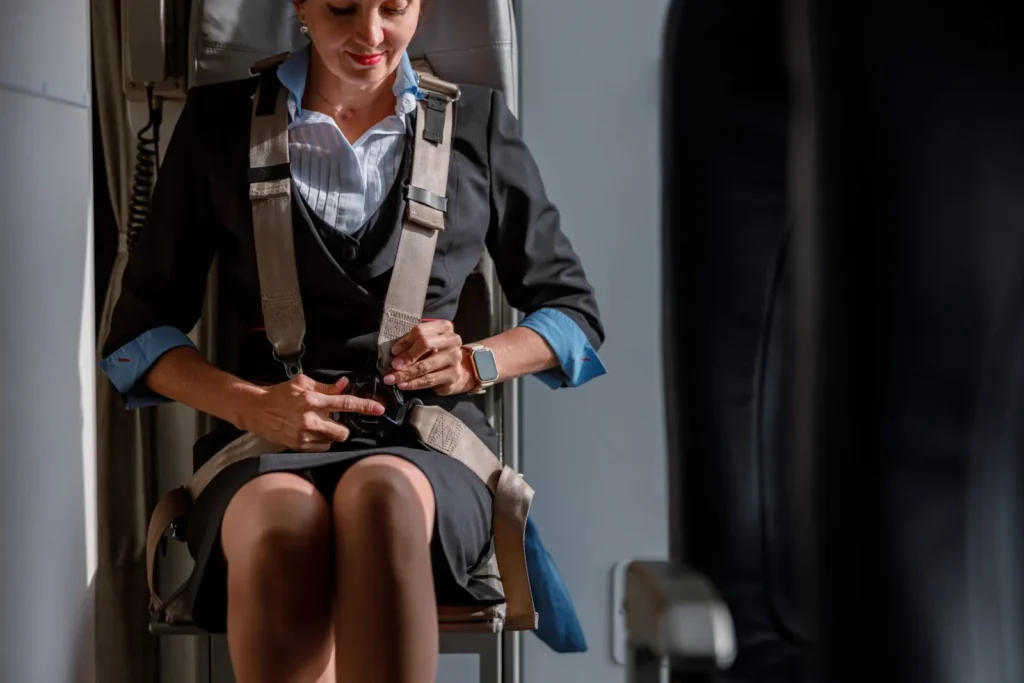 Photo- Shutterstock
Photo- ShutterstockMystery of Cabin Crew Seat Belts
While passengers simply click a basic lap belt across their waist, cabin crew members must fasten additional chest straps that create an “X” pattern across their torso. This observation has generated considerable passenger speculation over the years.
The seatbelt disparity has become a frequent topic on Reddit forums, particularly gaining traction in discussion threads dedicated to aviation mysteries.
One Reddit user specifically questioned why flight attendants require cross-body “X” seat belts while passengers only receive horizontal waist restraints. This inquiry generated numerous responses from both former aviation industry employees and curious passengers seeking explanations.
 Photo: SuperJet International; Wikimedia Commons
Photo: SuperJet International; Wikimedia CommonsFormer Cabin Crew Share Insights
Aviation industry insiders provided valuable perspective on the seatbelt mystery through their Reddit contributions. Former cabin crew member @wishiwasyou333 recalled working on smaller 50-seater aircraft where jump seats presented unique challenges.
The former flight attendant explained that their jump seat wasn’t permanently bolted to the aircraft structure, instead relying on rails that allowed the seat to extend from its storage compartment.
The employee described the seat as “bouncy as hell” during normal takeoff and landing procedures, with significantly less padding compared to passenger seating.
This first-hand account revealed the necessity for additional harness systems, emphasising that flight attendants require enhanced protection during critical flight phases. The former crew member stressed the importance of keeping flight attendants safe when challenging situations arise.
Three-Point Belt
Related discussions explored why commercial aircraft don’t universally adopt three-point seatbelt systems similar to automobile restraints.
Aeroplane seatbelts primarily protect against turbulence rather than forward momentum scenarios common in automotive accidents.
The primary goal involves keeping passengers seated during flight disturbances, which are generally up and down motion from turbulence, so they don’t require protection from forward impact forces.
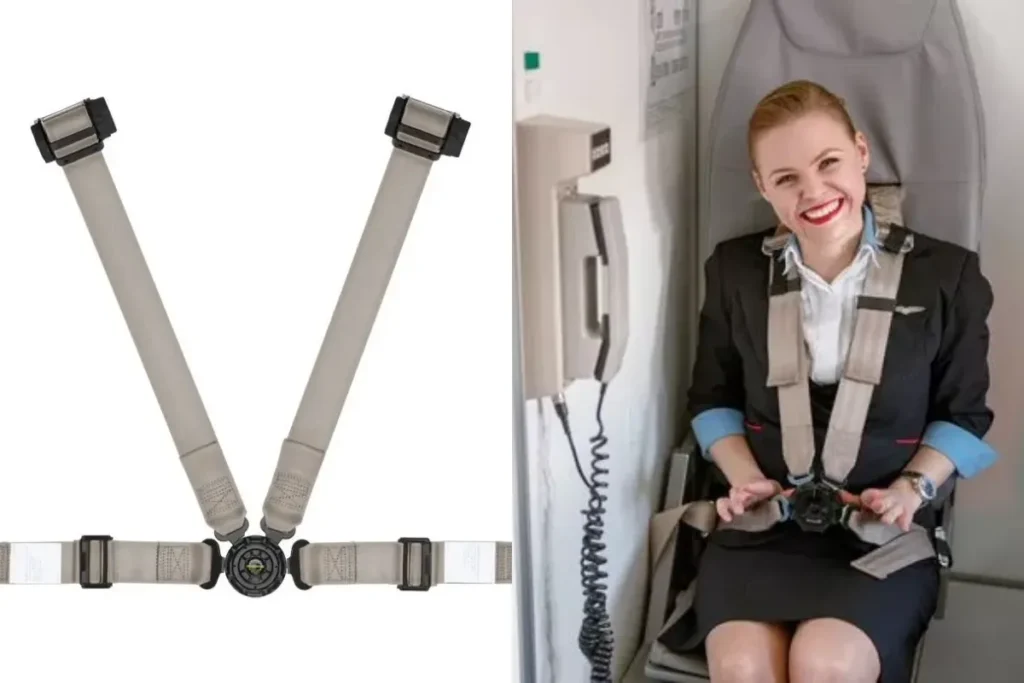 Photo- AeroExpo; Compiled by Aviation A2Z
Photo- AeroExpo; Compiled by Aviation A2ZTrade-Off
Marina Efthymiou, aviation expert and professor of aviation management at Dublin City University, provided professional insight into the seatbelt disparity. Efthymiou characterised the difference as a deliberate trade-off between passenger comfort and safety requirements.
The aviation professor explained that passengers would likely refuse to keep cabin crew-style seatbelts fastened throughout the flight due to comfort concerns.
Complex harness systems would significantly impede passenger evacuation procedures during emergencies, as travellers would struggle to quickly release multiple restraint points.
Cabin Crew Seating Configuration
Efthymiou further clarified that cabin crew seating arrangements differ fundamentally from passenger accommodations.
Cabin crew seats occupy spaces without additional structural protections, making enhanced belt systems necessary for adequate stability during flight operations.
The aviation expert concluded that ease of use and evacuation speed represent the primary factors determining seatbelt design differences between crew and passenger areas. These considerations directly influence safety protocol development and equipment specifications.
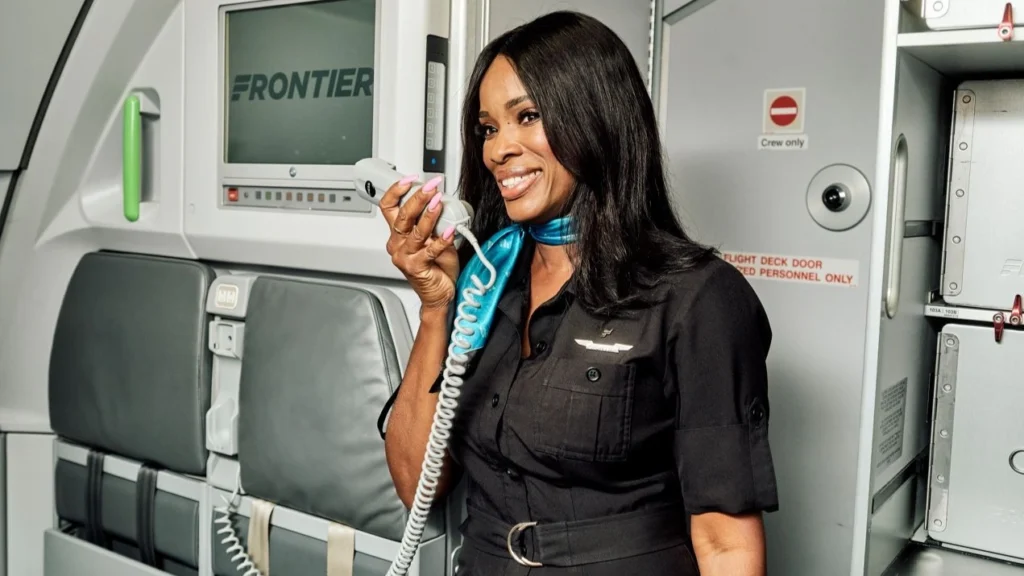 Photo: Frontier Airlines
Photo: Frontier AirlinesPsychological Techniques
Beyond safety equipment differences, cabin crew members utilise various techniques to maintain passenger confidence during challenging flight conditions. Flight attendants understand that passengers closely monitor crew reactions, particularly during severe turbulence episodes.
Meryl Love, a 37-year-old international airline flight attendant, previously shared her approach to managing passenger anxiety during turbulent conditions.
Love explained that she deliberately displays exaggerated positive emotions when passengers observe crew members taking their seats during rough weather.
The experienced flight attendant described her technique as plastering a “huge fake smile” on her face while pretending to laugh at jokes and appearing genuinely happy. Love characterised this behaviour as a calculated routine designed to reassure nervous passengers by projecting calm confidence despite challenging flight conditions.
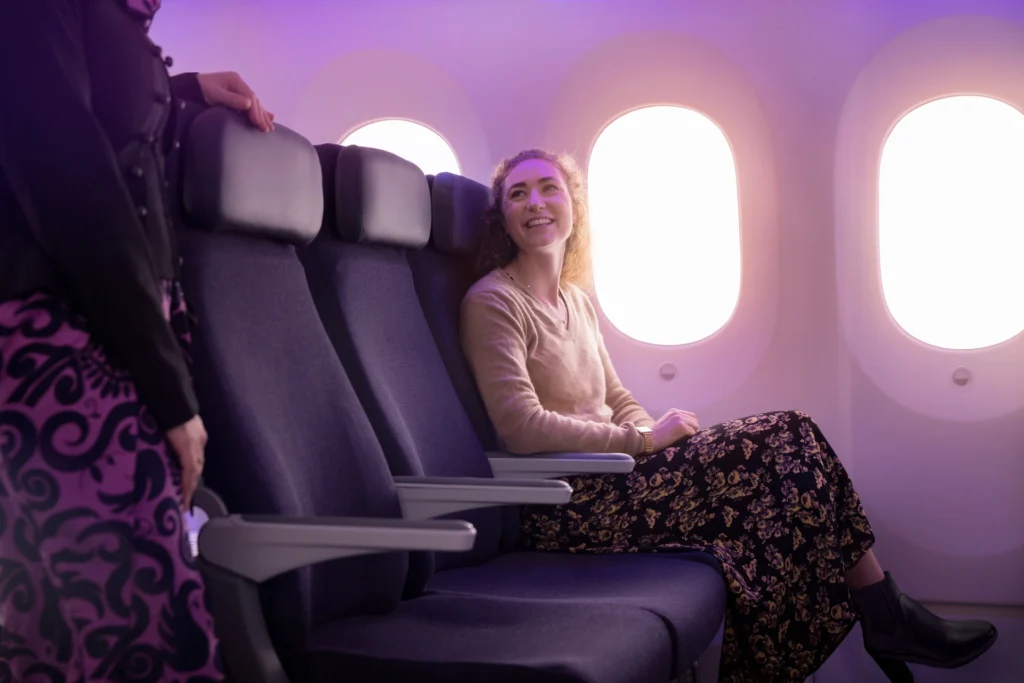 Air New Zealand New Economy Class Seats on 787 | Photo: Air New Zealand
Air New Zealand New Economy Class Seats on 787 | Photo: Air New ZealandBottom Line
The mystery of different seatbelt systems between cabin crew and passengers reveals a carefully calculated balance between safety requirements, comfort considerations, and emergency preparedness.
While passengers might initially feel shortchanged by their simpler lap belts, the design differences serve everyone’s best interests.
Cabin crew members require enhanced restraint systems due to their unique seating arrangements and critical safety responsibilities, while passengers benefit from easily removable belts that facilitate rapid evacuation.
This aviation quirk demonstrates that sometimes what appears unfair represents thoughtful engineering designed to keep everyone as safe as possible!
Stay tuned with us. Further, follow us on social media for the latest updates.
Join us on Telegram Group for the Latest Aviation Updates. Subsequently, follow us on Google News
Unsettling Truth About Airplane Blankets: What Flight Attendants Won’t Tell You
The post Why Are Cabin Crew Seat Belts Different Than Yours? appeared first on Aviation A2Z.


